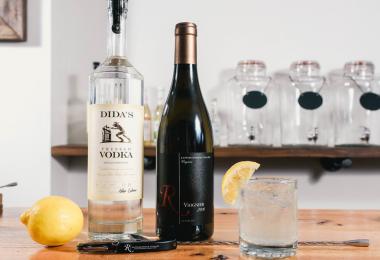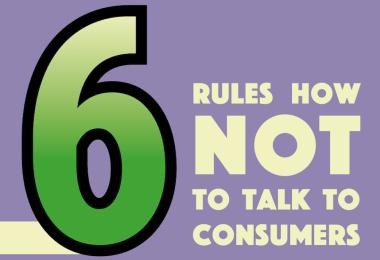Sparkling wines are enjoying a prolonged boom in Japan. Imports rose from 32m bottles in 2010 to 48m in 2018; France, Spain, Italy, Chile and Australia together account for 98% of imports. Growth rates are slowing but overall demand is firm, and while it is estimated that sparkling wine constitutes 15% of all wine imports by volume, it represents 30% of the market by value.
Old World on top
Champagne accounts for roughly two-thirds of French sparkling wine sold in Japan, which is Champagne’s third-largest export market. From 2009 to 2018, exports grew from 5.1m to 13.6m bottles with a value of €318m ($353.3m). Supporting development of the market is the CIVC Japan Bureau, which was established in 1993 and for the past ten years has organised high-profile events such as Joie de Vivre, attended by public figures and celebrities. Henceforth, in line with the CIVC’s global policy, there will be more focus on education for professionals.
What distinguishes the Japanese market for Champagne is the high ratio of premium cuvées such as vintage, rosé, blanc de blancs and demi-sec. Makoto Abe, sommelier and founder of the Japan Champagne of the Year competition, notes that among the Grandes Marques, Dom Perignon, Krug, Cristal and Belle Epoque are in a league of their own. Much of the demand is driven by business entertainment (settai), notably at nightclubs in Tokyo’s Ginza district. Jean-François Lagarde, Champagne Thiénot’s export manager, adds that the country’s gift-giving culture also supports the market. Giving gifts during chugen (summer) and the seibo (year end) period remains common. Keen demand further ensures that prestige cuvées such as Thiénot’s Garance Blanc de Rouges are sold by the glass at top restaurants such as Dominique Bouchet.
Grower Champagnes are also popular. There are more than 530 houses exporting to Japan of which more than 300 are growers, with prodigious demand for Jacques Selosse as well as the likes of Jérôme Prévost and Olivier Collin. Yasuko Goda of importer Racines notes that she can secure relatively generous allocations because she has worked with the latter two since their earliest vintages.
Imports of Spanish sparkling wine are second only to French by volume and totalled 11.4m bottles in 2018. Spain is expected to be a significant beneficiary of the European Union – Japan Economic Partnership Agreement (EPA), in effect since February 2019, which removed tariffs of ¥ 136 ($1.25) per 75cl bottle on sparkling wine. Indeed, the Consejo Regulador del Cava reports that exports to Japan grew 44.8% by volume and 37.1% in value in the first quarter of 2019. The greatest impact will be on lower-value imports. Haruhiko Arai, president of Winery Izumiya, a leading importer of new wave Spanish wines, believes that the rise of tapas bars has led to increased consumption of Cava, though he feels that Cava brands are not well-known and off-trade wines are mostly selected on price and the appearance of the label.
There is also growing demand for high-end Cava. Takayuki Kikuchi, sommelier at the Michelin-starred Catalonian restaurant Sant Pau, lists 25 to 30 Spanish sparkling wines. He comments that whereas 15 years ago Cava was viewed as a cheap alternative to Champagne, nowadays the best Cava is appreciated as a distinct category of high-quality traditional method sparkling wine. Cava plans to reinforce its image with a series of educational events between autumn 2019 and spring 2020. According to Xavier Gramona, president of the eponymous Corpinnat producer, the company is present at leading venues in Tokyo, Kyoto and Osaka and its brand ambassador visits six times a year. Most recently he has seen a decline in volumes but an increase in the value of exports as demand for Gramona’s premium wines strengthens. Compared to other markets, Japan prefers longer-aged wines and the company’s most popular sparkling label is the Gramona Imperial, aged 48 months on lees.
Italy was the third-largest exporter in 2018 with 9.2m bottles. Japan is a great success story for Franciacorta; with more than 8,000 Italian restaurants in Japan, there is an army of quality-conscious professionals to support the DOCG. The consorzio established an office in Tokyo in 2014, which has been effective in promoting Franciacorta both as a high-quality wine and as a symbol of the Italian lifestyle. In a deft move, Japan’s first Franciacorta bar was recently opened on the luxury menswear floor of department store Hankyu in central Tokyo. The bar is nestled alongside the likes of Armani and Zegna. Silvano Brescianini, president of the consorzio and general manager of Barone Pizzini, visits Japan regularly and notes his wines are in leading retailers Mitsukoshi and Isetan as well as top Italian restaurants such as Bulgari.
In an apparent anomaly, Prosecco has yet to make the impressive gains seen in other international markets. This is despite numerous promotions in recent years, including Prosecco being the official sparkling wine partner of the Italian rugby team in the World Cup. The Prosecco DOC exported 1.9m bottles to Japan in 2018 and although there are anecdotal signs that it is gaining traction, the figures suggest that Prosecco has yet to create strong awareness of its appeal and value for consumers.
Prosecco Superiore Conegliano Valdobbiadene DOCG is working to promote its wines with Shigeru Hayashi, president of Soloitalia, a successful consultancy. Hayashi is one of Japan’s most knowledgeable authorities on Italian wine and food, having lived and worked in Milan for nearly 14 years. He notes that Prosecco is now widely seen in Italian restaurants, which was not the case only three years ago. He believes it is important for the DOCG to promote its recent elevation to UNESCO World Heritage status and emphasise that DOCG vineyards are on hillside sites producing higher-quality grapes. He also argues that the route to success is to promote drier styles to pair with food, including Japanese cuisine such as white meat sashimi and tempura.
The New World successes
Chile is the fourth-largest exporter to Japan. Imports have risen from 1m bottles in 2010 to 3.8m in 2018. The Japan-Chile EPA, initiated in 2007, gave the South American country an early advantage in price-sensitive sectors of the market. Chile is the largest exporter of still wines to Japan by volume and its wines are commonly found in supermarket and convenience stores where most wine is purchased. Japan is also Chile’s most important export market for sparkling wines: the largest producer is Valdivieso, imported into Japan by Mottox since 2008. Tank method Valdivieso Brut, with a retail price of about ¥ 1,100, is one of its more popular cuvées. The concern for Chilean producers is that now the EU has an EPA with Japan, European wines will be more competitively priced.
Australian shipments have risen from 1.4m bottles in 2010 to 2.6m in 2018. Adam Torpy, CEO of sparkling producers Taltarni and Clover Hill, notes that Japan is the company’s largest market in Asia for sparkling wines. Torpy reports higher demand in Japan for the rosés than in other markets. It is also a sophisticated market with an appreciation of quality. Australia’s EPA with Japan will eliminate tariffs on bottled wine in 2021, meaning that Australian sparklers cannot yet compete on price alone. With a clear strategy for each brand, working closely with experienced importer Jalux, Torpy is looking to expand to regional markets where there is considerable untapped potential.
Outside of the big five exporting countries, opportunities remain for other producers. Akira Fujimaki, who runs the wine section of Tokyu Honten department store in Tokyo, notes that Champagne sales have grown rapidly over the past ten years as the wine virtually sold itself. However, prices have also risen to a point where they are prohibitive for some consumers, creating an opportunity for other regions. English sparkling wine is gaining a reputation for quality. Nick Pegna, global sales director for BBR, says the company started exporting Hambledon and Gusbourne to Japan in 2016, so it is still in the initial stage of creating awareness for the brands. Most demand is coming from the on-trade at restaurants with open-minded sommeliers. English sparkling wine gained a marketing advantage in 2011 when Chapel Down was used for the British Royal wedding.
The market for sparkling wine made from grapes grown in Japan is also increasing. Grace Wine’s Extra Brut 2011 won a Decanter platinum medal and established that Japan can make world class traditional method sparkling wines. However, the annual production remains tiny at 1,000 to 3,000 bottles. More widely available are sparklers from Kikkoman’s Manns Wine, the largest producer of Japanese sparkling wines and pioneer of the tank method. Its Kobo no awa sec, made from Koshu grapes, was first produced in 2008. As domestic demand grows, Japanese wine will increasingly compete with international imports, although scale of production is a limiting factor.
The market in Japan for sparkling wine is buoyant. Consumers are active across the entire spectrum of styles and prices. With a clear strategy for their brands, working with experienced importers, and supported with winemaker visits or local representation, sparkling wine producers have every reason to toast a market that has room for further growth.
Roddy Ropner
This article first appeared in Issue 6, 2019 of Meininger's Wine Business International magazine, available by subscription in print or digital.








